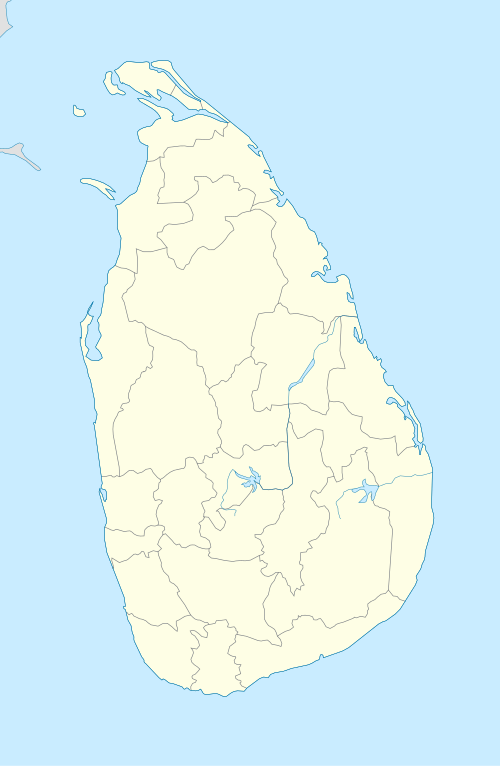Knuckles Mountain Range
| Knuckles Mountain Range | |
|---|---|
|
A view of the Knuckles mountain range | |
 Location of the conservation forest | |
| Location | Central Province, Sri Lanka |
| Nearest city | Matale |
| Coordinates | 7°27′N 80°48′E / 7.450°N 80.800°ECoordinates: 7°27′N 80°48′E / 7.450°N 80.800°E |
| Governing body | Department of Forest Conservation |
| World Heritage site | 1203-003: "Knuckles Conservation Forest (KCF)" since 2010 (within the site Central Highlands of Sri Lanka)[1] |
The Knuckles Mountain Range lies in central Sri Lanka, in the Districts of Matale and Kandy. The range takes its name from a series of recumbent folds and peaks in the west of the massif which resemble the knuckles of clenched fist when viewed from certain locations in the Kandy District. Whilst this name was assigned by early British surveyors, the Sinhalese residents have traditionally referred to the area as Dumbara Kanduvetiya meaning Mist-laden Mountain Range (Cooray, 1984).
The higher montane area is often robed in thick layers of cloud. In addition to its aesthetic value, the range is of great scientific interest. It is a climatic microcosm of the rest of Sri Lanka as the conditions of all the climatic zones in the country are exhibited in the massif. At higher elevations there is a series of isolated cloud forests, harbouring a variety of flora and fauna. Although the range constitutes approximately 0.03% of the island’s total area, it is home to a significantly higher proportion of the country’s biodiversity. The isolated Knuckles range harbours several relict, endemic flora and fauna that are distinct from central massif. More than 34 percent of Sri Lanka's endemic trees, shrubs, and herbs are only found in these forests.
Threats
Cultivation of cardamom at large scale in the montane forests is a major threat to the fragile forest ecosystem.[2][3][4]
Invasive exotic plant species such as Mist Flower (Ageratina riparia) that increasingly spread into montane forest areas and montane grasslands destroy the unique native Sri Lankan flora.[5] [6][7]
References
- ↑ "World Heritage Committee inscribes two new sites on World Heritage List". UNESCO. July 30, 2010. Retrieved 1 August 2010.
- ↑ Balram Dhakala et al. “Impacts of cardamom cultivation on montane forest ecosystems in Sri Lanka”, Forest Ecology and Management, Volume 274, 15 June 2012, Pages 151–160.
- ↑ Wickramage, Florence. "Parasites' Knuckled fist casts long shadow over 'Lanka's Alps'". Daily News. Retrieved 2009-03-28.
- ↑ Kumudini Hettiarachchi “No cardamom trees on Knuckles Range please”, The Sunday Times, July 06, 2014
- ↑ Lalith Gunasekera “Invaders in Knuckles Mountain Range”, The Island, October 21, 2011. Accessed 12.5.2017.
- ↑ Milan Lu, ““A growing threat” Archived 2016-08-13 at the Wayback Machine., Ceylon Today, 01.11.2011. Accessed 19.6.2016.
- ↑ Ranwala S., Marambe B.*, Wijesundara S., Silva P., Weerakoon D., Atapattu N., Gunawardena J., Manawadu L. and Gamage G. “Post-entry risk assessment of invasive alien flora of Sri Lanka - present status, gap analysis, and the most troublesome alien invaders”, Pakistan Journal of Weed Science 10/2012; 18:863-871.
| Wikimedia Commons has media related to Knuckles Mountain Range. |
Further reading
- Goonewardene, S., J. Drake, and A. De Silva. 2006. The Herpetofauna of the Knuckles Range. Project Knuckles 2004 and 2005: University of Edinburgh Research Expedition. Amphibia and Reptile Research Organisation of Sri Lanka (ARROS).
- Cooray, P.G.,1984. An introduction to the geology of Sri Lanka. Department of Geology. Government printing Press, Colombo, Sri Lanka.